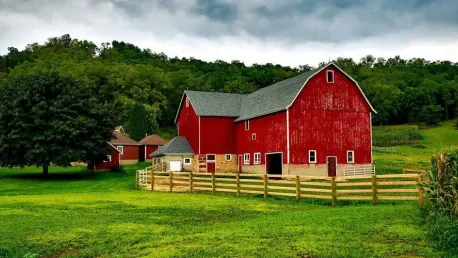ENGIE has put forth an ambitious proposal to develop an agricultural anaerobic digestion (AD) facility near Long Lane, High Catton, after receiving input from the local community. This project is designed to transform agricultural feedstocks and waste from nearby farms into renewable gas, playing a crucial role in meeting the UK’s legally binding net-zero carbon emissions target by 2050. Additional plans include the creation of new woodland and hedgerow planting, thereby embedding sustainability within natural conservation efforts.
Generating Renewable Energy and Supporting Local Farmers
Renewable Gas Production and Energy Security
The proposed AD facility is projected to supply renewable gas to approximately 5,200 homes. By producing green gas locally, the initiative aims to strengthen energy security and lessen dependence on imported fossil fuels. In an era where energy sustainability is paramount, this project not only fosters renewable energy generation but also serves the dual purpose of mitigating greenhouse gas emissions and enhancing regional energy autonomy. The importance of transitioning to renewable energy sources cannot be overstated in the context of long-term environmental and economic sustainability.
The production of renewable gas is not just an environmental goal; it is also a strategic move to provide a consistent income for local farmers. The facility will utilize agricultural feedstocks and waste, thus repurposing materials that would otherwise contribute to environmental degradation. Turning these byproducts into a valuable energy resource represents an ingenious fusion of agricultural processes and cutting-edge renewable energy technology. The end product, renewable gas, aligns with the national agenda of carbon reduction while simultaneously ensuring local economies benefit through job creation and enhanced community well-being.
Economic Benefits for Farmers and Reduction of Carbon Footprint
One of the significant advantages of the AD facility is the steady income stream it presents to local farmers. By selling agricultural waste to the plant, farmers receive a supplementary source of revenue, aiding their financial stability. Equally important is the contribution to reducing the farmers’ carbon footprint. The AD process not only creates renewable gas but also generates digestate, a natural byproduct that serves as a cost-effective fertilizer. This digestate can replace artificial fertilizers, reducing the chemical load on soils and promoting more sustainable farming practices.
The financial benefits extend beyond the immediate gains from selling waste and utilizing digestate. Enhanced soil quality through natural fertilization can lead to better crop yields over time, reflecting a long-term positive cycle of productivity and sustainability. In essence, the AD facility offers a holistic approach to agricultural sustainability, balancing economic viability with environmental responsibility. The reduced reliance on synthetic fertilizers also mitigates the carbon emissions associated with their production and transportation, further amplifying the project’s ecological benefits.
Mitigating Community Impact and Driving Local Investment
Community Integration and Traffic Management
ENGIE has taken measures to minimize the project’s impact on local communities and traffic. The operational plan includes restricting vehicular movements through High and Low Catton to diminish disruptions. This proactive approach demonstrates ENGIE’s commitment to engaging the community and addressing their concerns. Feedback from pre-application consultations has been instrumental in refining the plans, ensuring local residents’ concerns are acknowledged and mitigated. This comprehensive engagement framework underscores the company’s dedication to ethical and sustainable project development.
The company’s long-standing experience in renewable energy and community integration paves the way for this project to seamlessly blend into the local ecosystem. Establishing a robust Community Benefit Fund further solidifies this commitment, as it will channel support into local causes that resonate with the residents’ needs and aspirations. Such measures reinforce ENGIE’s reputation for prioritizing the communities they serve, ensuring that the benefits of renewable energy advancements are thoroughly felt at the grassroots level.
Investment, Job Creation, and Education
ENGIE has proposed an ambitious plan to build an agricultural anaerobic digestion (AD) facility near Long Lane in High Catton, following feedback from the local community. This facility is aimed at converting agricultural feedstocks and farm waste from nearby areas into renewable gas. Such a transformation is crucial for contributing to the UK’s legally binding goal of achieving net-zero carbon emissions by 2050. The initiative is not only focused on renewable energy production but also emphasizes environmental sustainability. In addition to the AD facility, ENGIE plans to create new woodland areas and plant hedgerows. These efforts will enhance natural conservation and promote biodiversity, embedding sustainability in various aspects of the project. This dual approach—harnessing renewable energy and advancing natural conservation—demonstrates ENGIE’s commitment to sustainable development and addresses both energy needs and environmental concerns. ENGIE’s proposal illustrates a comprehensive strategy to fight climate change while integrating the concerns and suggestions of the local community.









